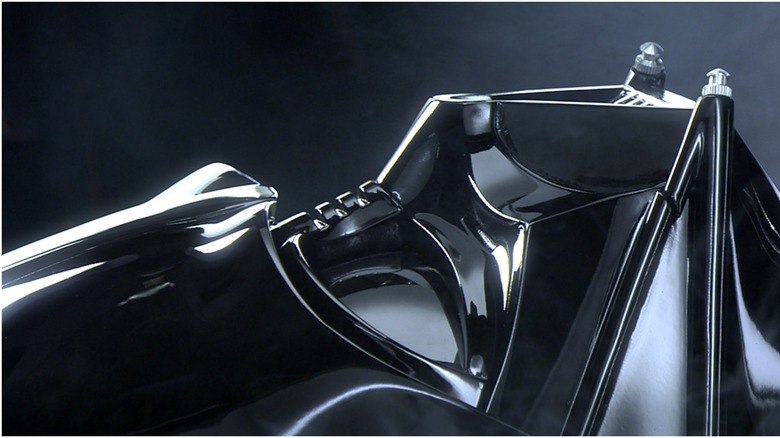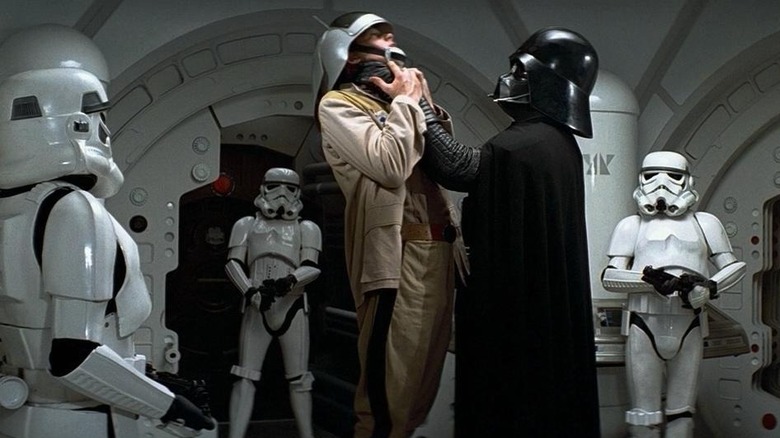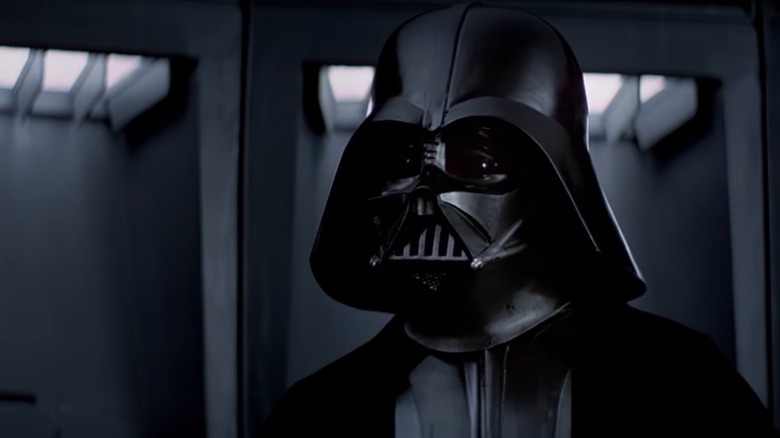How Star Wars Sound Designer Ben Burtt Created Darth Vader's Heavy Breathing
What do you think of when you think of Darth Vader? Black mask and armor? Red lightsaber? "I am your father"? For me, it's the breathing. A perfect complement to James Earl Jones' baritone voice, the breathing ensures Vader's presence dominates a scene even when he isn't speaking. It also proves that even behind his armor and cyborg body, Vader was once human. Yet the breathing still sounds automated, between its low and raspy sounds, how drawn out each breath is, and its repetition. As proof Vader is as much machine as man, even his breathing sounds robotic.
Giving Vader a human folly like labored breathing could've easily backfired and made him seem weak. (See: the unsuccessful attempt at replicating the tic with General Grievous' coughing fits in "Revenge of the Sith." It's a great accomplishment of sound designer Ben Burtt that it sounds anything but weak.
Designing Darth Vader
Like many "Star Wars" characters, Darth Vader was quite different in George Lucas' early drafts. In J.W. Rinzler's "The Making of Star Wars: The Definitive Story Behind the Original Film," Lucas even concedes, "Vader wasn't really developed until the fourth draft, when I was sorting out Vader's real character and who he was."
Per Rinzler, Vader was described in the first draft as simply a "tall, grim-looking general." A different character named Prince Valorum has many of the qualities later absorbed by Vader: a "Black Knight of the Sith" who has a change of heart. The second draft ("Adventures of the Starkiller Episode 1: The Star Wars") is where Vader becomes more familiar. In this script, he is introduced as:
"LORD DARTH VADER, right hand to the MASTER OF THE SITH. His sinister face is partially obscured by his flowing black robes and grotesque breath mask."
However, originally, Vader was only going to wear the breath mask during his introduction invading the rebels' ship and dueling with heroic Deak Starkiller. Ralph McQuarrie, the artist who designed Vader's mask, notes "the space suits began as being necessary for [Vader and Deak's] survival in space, but the suits became part of their character."
With how striking Vader's armor was, it made sense that Lucas and co. wanted to keep him in it the whole film. Lucas eventually struck on the idea that Vader's armor would be a mobile iron lung and devised the backstory that was realized in "Revenge of the Sith." In Vader's last clash with Obi-Wan, the Dark Lord had fallen into lava and his body was left a burnt husk. To both survive and conceal his ruined appearance, he wore a fearsome life support system.
According to Steve Sansweet's "Anakin Skywalker: The Story of Darth Vader," Lucas' third draft first mentioned Vader's filtered breathing. This left Burtt with the task of creating that breathing.
Ben Burtt's breathing
"Star Wars" was only Ben Burtt's second turn as a sound designer after "Death Race 2000." As Burtt told Film Sound Today, he wanted a naturalistic sound design to reflect the lived-in and dirty aesthetic of the film. This meant using sounds from the real world versus synthetically composed ones. For instance, he created the hum of a lightsaber by blending the sounds of an old television set and a 35mm projector.
Vader's breathing is actually Burtt's own, filtered through a scuba mask to create the deep, modulated intonation. According to Burtt, the breathing originally wasn't going to be the only sound that Vader's suit would make when he moved. Other sounds considered included a mechanical whirring whenever Vader moved, even as slightly as turning his head, and an audible heartbeat. These were cut, as the combination of sounds was too distracting. In an interview from the Lucasfilm archives, Burtt said: "In some experimental mixes we did he sounded like an emergency room."
Scaling back the sound effects with Vader was the right call. While they would have further indicated his cyborg nature, the breathing and robotic design of his armor already suffice. There are two big lessons from Darth Vader's creation. One: Less is more. Second: In film, it's not just writers who build a character. It took not just George Lucas' name and characterization to build Darth Vader as we know him, but Ralph McQuarrie's concept art and Burtt's sound design.


